Faculty & Staff
The Academicians

1. Professor Shen Qihan (born in Huaiyin, Jiangsu on Apr. 27, 1922)
Native of Haimen, Jiangsu; graduated from the Department of Geology, Chungking (Chongqing) University in 1946; elected member (academician) of the Chinese Academy of Sciences in 1991. Serves as senior researcher of the Institute of Geology, CAGS.
Has long been engaged in the study of Early Precambrian geology and petrology of metamorphic rocks. In the 1950s, conducted iron and copper detailed reconnaissance and participated in the first summing-up of China’s Precambrian and compilation of the 1:3,000,000 Precambrian geological map. In the 1960s, devoted himself to the study of Early Precambrian geology, isotope geochronology and work methods in metamorphic terrains. In the 1970s, made a survey of iron and copper deposits in Qinghai and Shaanxi. In the 1980s, performed intensive studies of high-grade metamorphic rocks and major geological events in the North China platform; compiled as the second chief compiler the 1:4,000,000 Metamorphic Map of China and participated in summing-up. In the 1990s, undertook a systematic study of Early Precambrian granulite and the stratigraphic (structural) chronological framework. Since 2000, has conducted intensive studies of the formation and evolution and dynamic model of the early Earth’s continental crust in northern China, division and correlation of structural-petrological-stratigraphic units and chronological framework in several major Precambrian terrains of northwestern China and found the oldest continental blocks several times. Representative works include Precambrian Granulite of China and Composition and Geological Evolution of the Yishui Complex, Shandong. Won the National Natural Science Prize, second class, in 1989.
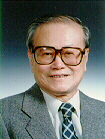
2. Professor Xie Xuejin (born in Beijing on May 21, 1923)
Graduated from the Department of Chemistry, Chungking (Chongqing) University in 1947; elected member of the Division of Earth Sciences (academician), Chinese Academy of Sciences in 1980.
Initiated and laid a foundation for exploration geochemistry in China under the guidance of Xie Jiarong. Proposed the “National Mapping Program—Regional Geochemistry—National Reconnaissance” (RGNR) in 1979 and guided many institutions in China to complete >7 million km2 of sample collection and analyses and geochemical mapping for over 30 years, on the basis of which hundreds of mineral deposits (especially gold deposits) of commercial value have been found. Began to promote the standardization of international geochemical mapping in 1988. Recently devoted himself to the study of the new theory, method and strategy of looking for China’s hidden huge deposits and geochemical monitoring of the global continental environment. Representative works include Regional Exploration Geochemistry, Geochemical blocks—development of concepts and methodology, Global geochemical mapping and Recent advances in deep-penetration geochemistry. Won the Prize of Ho Leung Ho Lee Foundation for Scientific and Technological Progress in 2002 and the Gold Medal of the Association of Applied Geochemists in 2007.
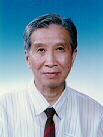
3. Professor Xiao Xuchang (born in Anshun, Guizhou on Oct. 12, 1930)
Graduated from the Department of Geology, Peking University in 1952; elected member (academician) of the Chinese Academy of Sciences in 1991. Serves as senior researcher of the Institute of Geology, CAGS.
In the early 1950s discovered and evaluated the Xiaotieshan polymetallic ore deposit at peripheries of Baiyinchang and compiled the Tectonic Map of China and Basic Tectonic Features of China with his colleagues. The earlier geologist to study plate tectonics and ophiolites, elucidate the Qilianshan blueschist high-pressure metamorphic belt and establish a complete ophiolite section in China. Suggested that the formation and uplift-subsidence of the Qinghai-Tibet Plateau and their effects are characterized by temporal-spatial unbalance and are under “multi-stage, multi-level and multi-factor” control. Distinguished major processes of an orogenic belt from the tectonic evolution-dispersion to collisional orogeny and made a dynamic classification of ophiolites—an important indicator of orogenic belts. Representative monographs include The Geological Structural Features of Chromite-bearing Mafic-Ultramafic Rocks, Tectonic Evolution of the Lithosphere of the Himalayas, Tectonic Evolution in Northern Xinjiang and Its Adjacent Areas, Tectonic Evolution on the Southern Margin of the Paleo-Asian Composite Megasuture, Tectonic Evolution and Uplift of the Qinghai-Tibet Plateau etc. Won the J.S. Lee Honorary Prize for Geological Sciences in 1993 and the Prize of Ho Leung Ho Lee Foundation for Scientific and Technological Progress in 2003.

4. Professor Yuan Daoxian (borin in Zhuji, Zheiiang on Aug.24,1933)
Graduated from the Nanjing Technological College of Geological Surveys in 1952; elected Member (academician) of the Chinese Academy of Sciences in 1991. Serves as research fellow of the Institute of Karst Geology, CAGS.
In the 1960s-70s, advanced the concept that the most basic feature of karst groundwater is heterogeneity of water-bearing media and guided hydrogeological exploration. In the 1980s, built the Guilin Karst Hydrogeological Experimental Site, established the mechanism of groundwater movement in the aeration zone and constructed the mathematic model of water regulation and storage functions. Summarized the basic characteristics of regional karst of China and made a correlation of global karst. Summarized the geochemical mechanism of karst development of the open system and semi-open and semi-closed system of China. Used the karst geochemical field and tracing techniques to verify the recharge way of the Baotu Spring. Studied the relation between karstification and the global carbon cycle, used stalagmite information to study global change and advanced karst dynamics. Author of Hydrogeological “Work Method for Water Supply in Karst Areas”, “Dictionary of Karstology” and “Carbon Cycle and Karst Geo-environment”.

5. Professor Li Tingdong (born in Luancheng, Hebei on Oct. 7, 1930)
Graduated from the Beijing College of Geology in 1953; elected member (academician) of the Chinese Academy of Sciences in 1993.
Specializes in regional geology and compilation of geological maps. Took charge of or participated in geological investigation and research in the northern Da Hinggan Mountains, western Sichuan, the Himalayas and the Qinghai-Tibet Plateau and improved or redefined the stratigraphic systems, phases and sequences of intrusive rocks and tectonic frameworks in these regions. Summarized the regional geological characteristics of China and development characteristics of magmatic rocks of Asia and proposed the uplift stages and mechanism of the Qinghai-Tibet Plateau. In charge of compiling the Geological Map of Asia, Geological Atlas of China and Geological Map of Asia and Europe and completing research on the lithospheric structure and mineral resource potential in Antarctica and on 3D structure of the lithosphere in China. Representative works include Geology of Asia and the Process and Mechanism of the Rise of the Qinghai-Tibet Plateau. Received the National Natural Science Prize, first class, in 1982 and J.S. Lee Honorary Prize for Geological Sciences in 1998.
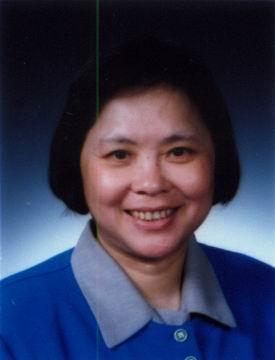
6.Professor Xu Zhiqin (born in Shanghai on Aug. 13, 1941)
Graduated from the Department of Geology and Geography, Peking University, in 1964; got her doctor degree in structural geology at Montpellier University, France in 1987; elected member (academician) of the Chinese Academy of Sciences in 1995 and member of the Academy of Sciences for the Developing World in 2008. Serves as senior researcher of the Institute of Geology, CAGS.
The first to apply geometry, kinematics and dynamics of structural geology and quantitative analysis in the study of the Qinghai-Tibet Plateau and several orogenic belts of China, redefined >50 large-scale ductile shear zones in China and laid a foundation for the study of the deformation structural system. In 1987, found for the first time the important information of ultrahigh-pressure coesite in the Dabie Mountains and presented a series of important views and theories about the collision dynamics and orogenic mechanism of the Qinghai-Tibet Plateau. The first to implement the plan of continental dynamics in China. As Principal Investigator, she made an important contribution to the Chinese Continental Scientific Drilling (CCSD) project which was completed in 2005 and has had significant influence both in China and abroad. Won the Prize of Ho Leung Ho Lee Foundation for Scientific and Technological Progress, J.S. Lee Honorary Prize for Geological Sciences, second class of the State Scientific and Technological Progress Prize and first class of Scientific and Technological Achievement Price from the Ministry of Land and Resources.
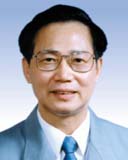
7. Professor Zheng Mianping (born in Zhangzhou, Fujian on Nov.17, 1934)
Graduated from the Department of Geology, Nanjing University in 1956; elected member of the Chinese Academy of Engineering in 1995. Serves as senior researcher of the Institute of Mineral Resources, CAGS.
Has devoted himself to the study of the geology of saline mineral deposits, total utilization of saline lake resources and epithermal deposits for ~50 years; carried out a systematic innovative study of various types of saline lake regions and saline mineral occurrences of China, especially saline lakes on the Qinghai-Tibet Plateau and achieved a series of fruitful scientific research results. Participated in discovery and evaluation of the Qarhan saline lake potash deposit in Qinghai and developed the theory on potash deposition in continental facies; three times led a team to investigate the Lop Nur and found brine containing potash with an industrial grade and for the first time found potash minerals. In order to develop Zabuye Salt Lake, used the unique technologies of solar ponds and freshwater flushing for lithium extraction suited to the special geographic environment of the Qinghai-Tibet Plateau, which provides the main technological support for the Zabuye lithium extraction project. Won the National Science Congress Prize twice, J.S. Lee Honorary Prize for Geological Sciences, Prize of Ho Leung Ho Lee Foundation for Scientific and Technological Progress and other prizes. Author of An Introduction to Saline Lakes on the Qinghai-Tibet Plateau.
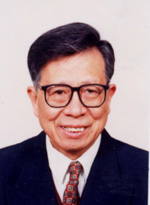
8.Professor Lu Yaoru (born in Fuzhou, Fujian on May 1, 1931)
Graduated from Beijing College of Geology in 1953; elected member of the Chinese Academy of Engineering in 1997. Serves as senior researcher of the Institute of Hydrogeology and Environmental Geology, CAGS.
Has worked on karst and its related hydrogeology, engineering geology and environmental geology for >50 years and made outstanding achievements in karst research. Conducted an intensive study of the development regularity and formation mechanism of karst and explored the mechanisms of compound karstification of carbonate rocks and sulfate rocks, which are the frontier directions in karst research. On the basis of the practice, proposed the characteristics of five opposite systems of the karst aquifers and performed studies of karst hydrodynamic conditions and processes.
In aspects of engineering works and geohazard prevention and control, achievements were also generally recognized. Has actively studied and solved difficult karst problems concerning water conservancy and underground space opening-up, put forward the ideas such as the engineering environmental impacts and geohazard chain, developed the systematic theory on geology-eco-environment and concept of rock desertification, and advanced several ways and models for the economic development in karst mountainous areas. Published ~100 papers in Chinese or English, 10 monographs and one map series. Won the J.S. Lee Honorary Prize for Geological Sciences in 1999.
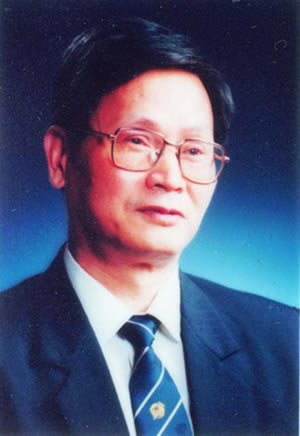
9.Professor Chen Yuchuan (born in Pinghu, Zhejiang on Dec. 7, 1934)
Native of Pinghu City, Zhejiang; graduated from the Donetsk National Technical University, Ukraine in 1959; elected member (academician) of the Chinese Academy of Engineering in 1997. Serves as senior researcher of CAGS.
Has long engaged in studies of mineral deposit geology, geochemistry, metallogeny and mineral deposit prognosis, as well as mineral exploration. Has made outstanding contributions to studies of tin, tungsten, iron, copper and gold deposits and metallogeny, mineral deposit models and minerogenetic series in northern Guangxi, Nanjing-Wuhu, the Nanling Mountains and the Altay Mountains and all over China and mineral exploration. When served as director of the Department of Geology and Mineral Resources, Ministry of Geology and Mineral Resources (MGMR), and chief geologist of MGMR since 1983, played an important role in the promotion of geological survey and mineral exploration, significant increase of gold reserves and popularization of the heap leaching technique of low-grade gold ore. Author of 14 monographs and >80 papers published at home and abroad. Won the J.S. Lee Prize for Geological Scientific and Technological Researchers in 1997, the Kuang Hua Engineering Technique Prize in 2004 and the Special State Scientific and Technological Progress Prize once and the second-class State Scientific and Technological Progress Prize five times.
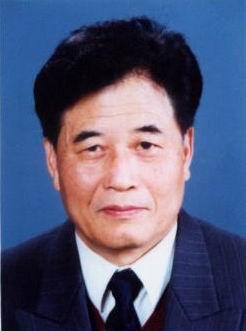
10. Professor Ren Jishun (C.-S. Jen) (born in Huayin, Shaanxi on Feb. 6, 1935)
Confirmed that southeastern China is a Caledonian fold belt and found that western Yunnan is an Indosinian fold belt and that the South China Sea was originally a Precambrian block. The first to plot the plate suture zone within China in more detail on the Tectonic Map of China and developed the polycyclic tectonic theory from a global dynamic point of view. Revealed the overpass structure of the crust-upper mantle and its dynamic setting in eastern China; pointed out that the Phanerozoic tectonic evolution in East Asia was mainly marked by the breakup of Gondwana, accretion of the Asian continental and formation of the Paleo-Asiatic, Tethys-Himalaya and Peri-Pacific tectonic domains. Representative works are Geotectonic Evolution of China, Tectonic Evolution of the Continental Lithosphere and Metallogeny in Eastern China and Adjacent Areas, 1:5 M Tectonic Map of China and Adjacent Regions and The Tectonics of China from a Global View. Won the National Natural Science Prize, first class.
Graduated from the Department of Geology, Northwest University in 1955; elected member of the Department of Earth Sciences (academician), Chinese Academy of Sciences in 1997. Serves as senior researcher of the Institute of Geology, CAGS.

11. Professor Pei Rongfu (born in Qinhuangtao, Hebei on Aug. 20, 1924)
Native of Liaocheng, Shandong; graduated from Tsinghua University in 1948; elected member of the Chinese Academy of Engineering in 1999; senior researcher of the Institute of Mineral Resources, CAGS. Served as President of the International Association for Genesis of Ore Deposits (IAGOD).
Has long engaged in mineral exploration and research on metallogenesis; took charge of 5 major mineral exploration projects at home and abroad and >30 projects of mineral exploration and verification and comparative studies of mining engineering works; presented the solid mineral exploration models of “double controls” and “reasonable region”, policy decision of risk investigation, rational exploitation of mines and 5R cyclic economy of mines, which are used to conduct scientific evaluation for rational guidance of mineral exploration and sustainable development of the mineral industry. During the past 20 years, has focused his study on the metallogenic settings of superlarge ore deposits, for the first time completed the World Metallogenic Map of Large and Superlarge Mineral Deposits and the global metallogenic system, and proposed new concepts such as “preferentiality” of formation of superlarge ore deposits,“unity” of global metallogenesis, “specialty” of different regions, “abnormality” of economic superaccumulation of metals, “hierarchical systematics of metallogenesis” and “super-accumulations of metals” for exceptionally large ore deposits, which provide a theoretical basis for mineral exploration nationwide. Won the J.S. Lee Prize for Geological Scientific and Technological Researchers in 1995 and several state- and ministerial-level scientific and technological progress prizes.

12. Professor Zhao Wenjin (born in Beijing on Feb. 1, 1931)
Graduated from the Department of Physics, Tsinghua University in 1952; elected member of the Chinese Academy of Engineering in 2001. Senior researcher of CAGS.
Mainly engages in mineral exploration in Anhui and Sichuan provinces, developed new geophysical techniques and conducted deep geophysical exploration on the Tibetan Plateau and made several major discoveries. Due to his contributions, won the Gu Gongxu Geophysical Prospecting Science and Technology Prize of the Chinese Geophysical Society in 1998, the second class of the National Natural Science Prize in 2000, the Prize of Ho Leung Ho Lee Foundation for Scientific and Technological Progress in 2003 and the J.S. Lee Honorary Prize for Geological Sciences in 2005. Author of 5 monographs and >80 papers published in journals.

13. Professor Yang Wencai (born in Dapu, Guangdong in October 1942)
Graduated from Beijing College of Geology in August 1964; got his doctor degree at McGill University, Canada in June 1984; elected member of the Chinese Academy of Sciences (academician) in 2005. Senior researcher of the Institute of Geology, CAGS.
On the basis of the functional analysis, constructed an inversion theoretical framework suited to various exploration geophysical methods; improved several seismic inversion methods. Opened up the new direction for nonlinear seismic inversion with the chaos theory and nonlinear seismic inversion method. Applied his theory and methods in investigation of mineral, petroleum and engineering geophysics. Made a prediction or inference of the lithology and structure of the main hole of Chinese Continental Science Drilling, which has been essentially confirmed by the results of follow-up core drilling. Presented the geometric model of continent-continental deep subduction and obtained the quantitative concept of the scale of continent-continental deep subduction and resulting crust-mantle interaction. Found rare horizontal layered reflectors inside the lithospheric mantle in eastern China, which changes the previous view that the lithospheric mantle in extensional areas is relatively transparent because of lack of reflection. Author of 7 monographs and >170 papers.

